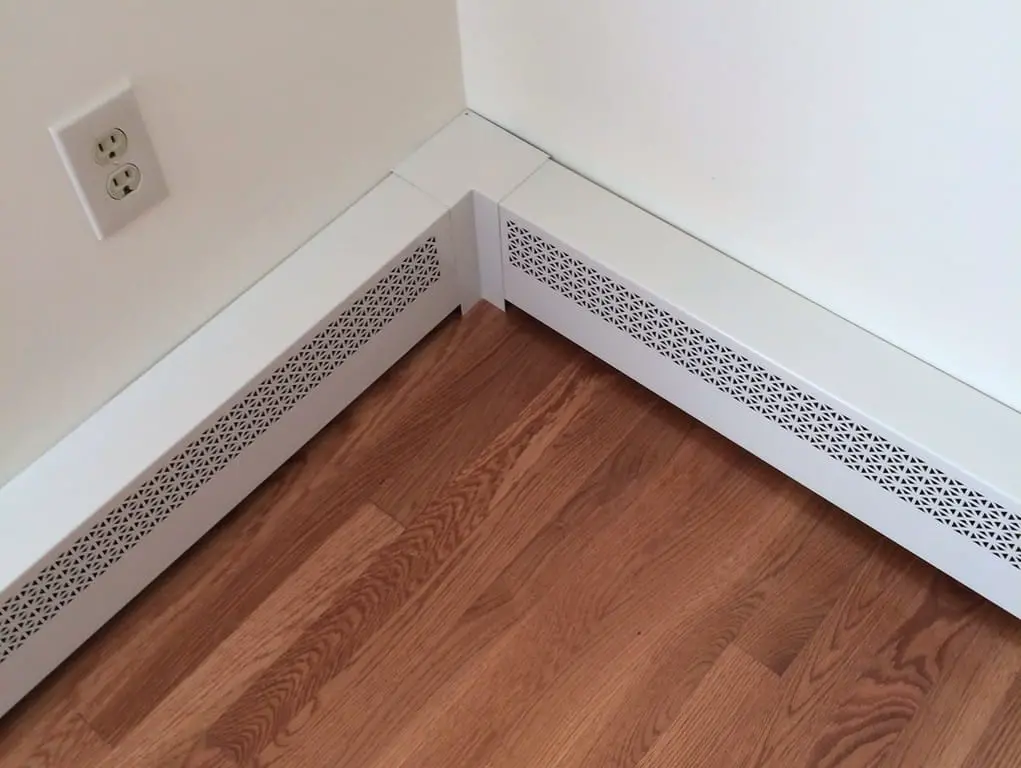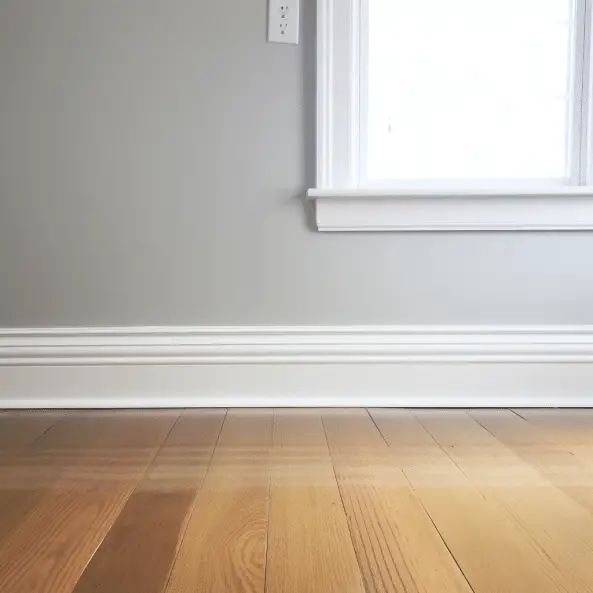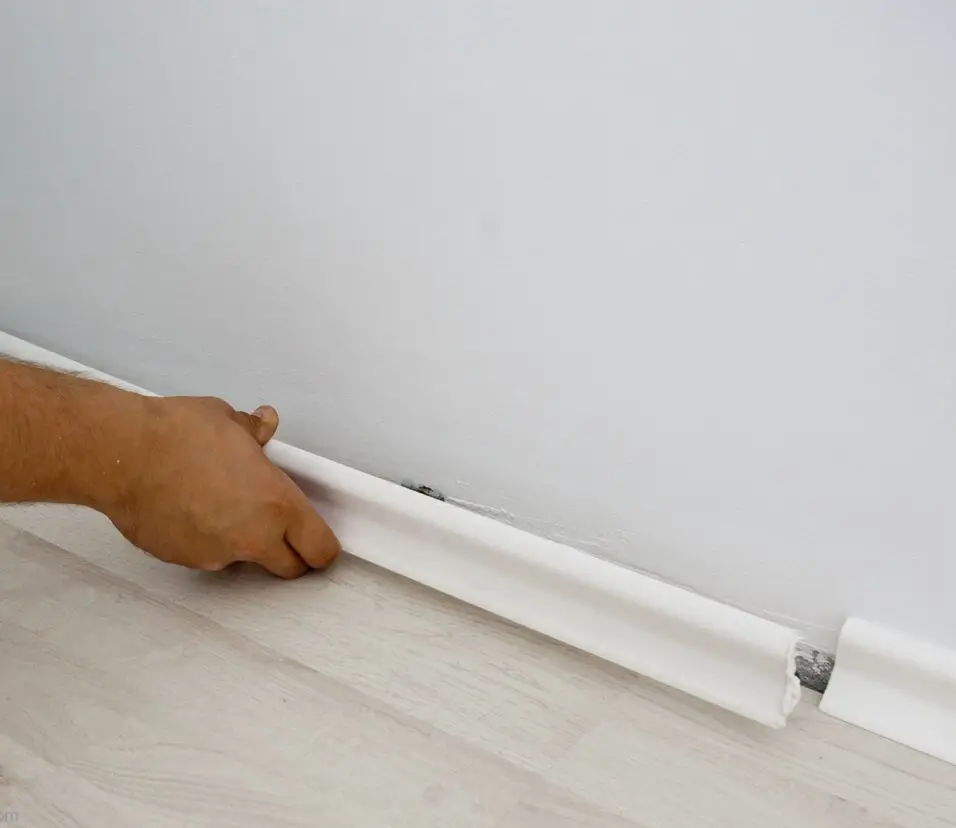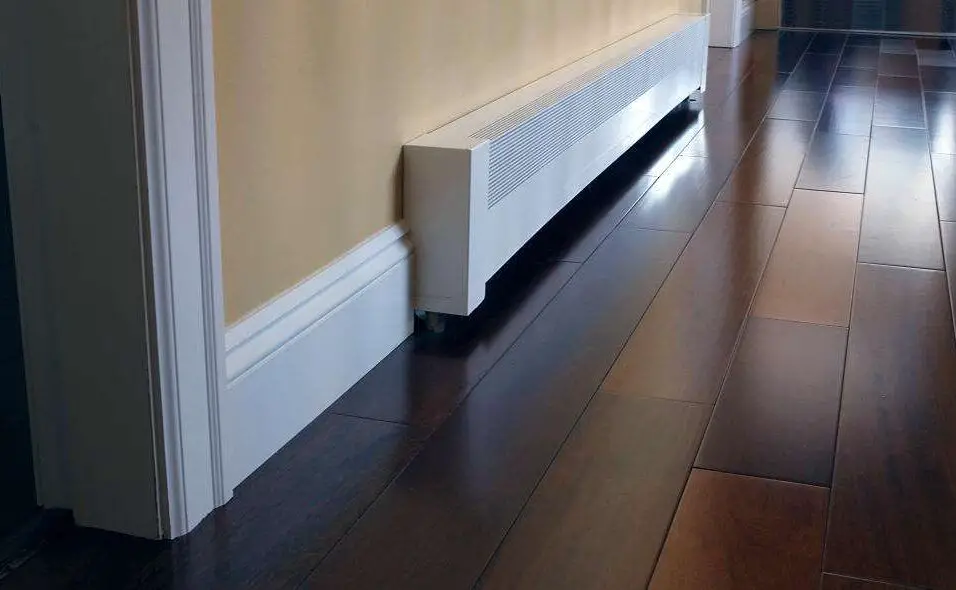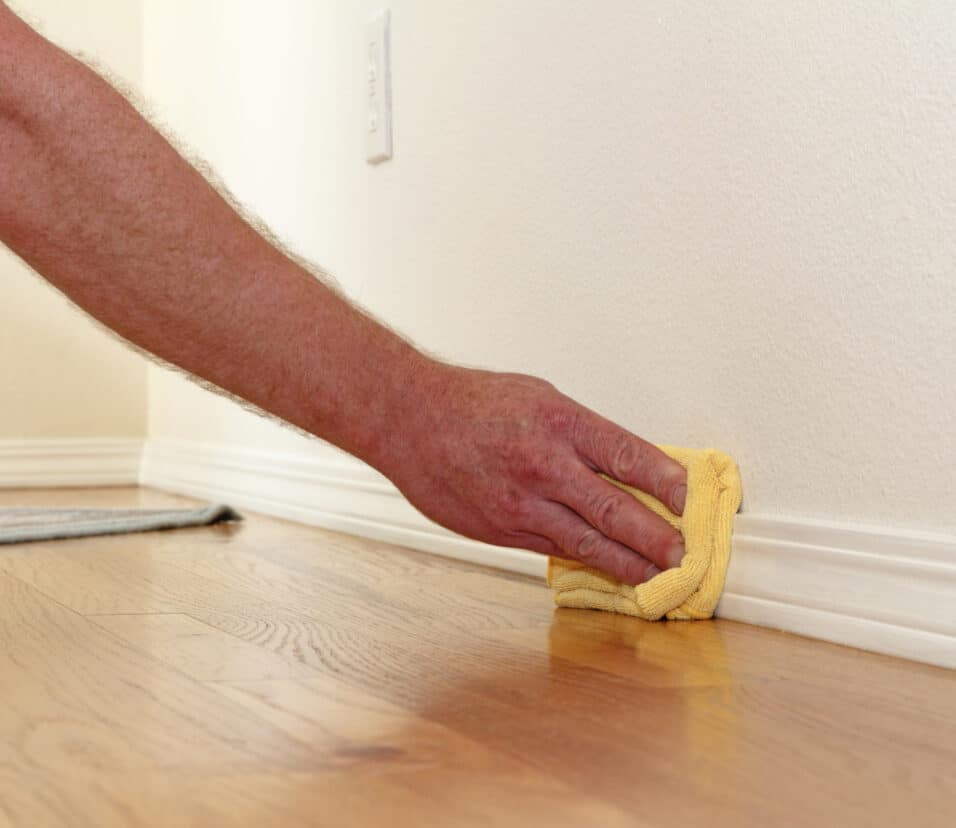What Are Baseboards Made Of
Introduction
What Are Baseboards Made Of: When it comes to the materials used to make replacing baseboards, there are several options available, each with its own unique characteristics and benefits. One of the most common materials used is wood. Wood baseboards offer a timeless and elegant look, adding warmth and sophistication to any room. They can be made from a variety of wood species, such as pine, oak, or maple, each with its own distinct grain pattern and color. Wood baseboards can be stained or painted to match the existing decor, making them a versatile choice for any style of interior design.
Another popular material for baseboards is medium-density fiberboard (MDF). MDF baseboards are made from a composite material consisting of wood fibers and resin, which are pressed together to create a dense and durable board. MDF baseboards are often less expensive than wood, making them a budget-friendly option for homeowners. They can be easily painted to achieve a smooth and seamless finish, and they are resistant to warping and cracking, making them a practical choice for high-traffic areas.
In addition to wood and MDF, baseboards can also be made from other materials such as vinyl, PVC, or even metal. Vinyl baseboards are moisture-resistant and easy to clean, making them a popular choice for bathrooms and kitchens. PVC baseboards are lightweight and flexible, making them easy to install and maintain. Metal baseboards, such as aluminum or stainless steel, offer a sleek and modern look, perfect for contemporary or industrial-style interiors.

What material is best for baseboards?
When it comes to choosing the best material for baseboards, there are several options to consider. Baseboards not only serve a functional purpose of covering the joint between the wall and the floor, but they also add a decorative element to the room. The material you choose for your baseboards can greatly impact the overall look and feel of your space.
One popular material for baseboards is wood. Wood baseboards are known for their durability and timeless appeal. They can be made from a variety of wood species, including pine, oak, and maple. Wood baseboards can be stained or painted to match the existing decor in your home. They are also relatively easy to install and can be customized to fit any space.
Another option to consider is MDF (medium-density fiberboard)
Mixed wood fibers and resin are pressed together to make MDF baseboards. This makes the material thick and long-lasting. MDF baseboards are cheaper than wood baseboards, and they’re easy to paint to match any style. But they don’t stand up to water as well as wood baseboards, so they might not be a good choice for bathrooms or basements where water damage is common.
Metal baseboards might be the best choice for a more current and clean look. Metal baseboards look clean and simple because they are usually made of metal or stainless steel. They don’t get damaged by water and are simple to clean, which makes them a popular choice for rooms with a modern look or a lot of foot traffic. But metal borders may cost more than other types and may need to be put in by a professional.
Finally, vinyl baseboards are a cheap choice that can be used in many ways and lasts a long time. Vinyl borders are made from polyvinyl chloride (PVC), which doesn’t absorb water. This makes them good for places where water damage is likely to happen. There are many colors and styles to choose from, so you can find one that looks great in your room. And vinyl borders are simple to clean and keep up, which makes them a popular choice for homes with lots of activity.
What wood is baseboard made of?
Real wood baseboards, such as those found in home centers, tend to be made from softwoods such as long, uninterrupted pine boards and finger-jointed pine or from hardwoods such as oak and hemlock. Softwoods typically are primed and painted, though not always.
There are several types of wood that are commonly used for baseboards, each with its own unique characteristics and advantages. One of the most popular options is pine, which is known for its affordability and ease of installation. Another common wood used for baseboards is oak, which is prized for its strength and durability. Oak is also resistant to moisture and rot, making it a suitable option for bathrooms and other high-moisture areas.
Baseboards are typically made of wood, with pine and oak being the most commonly used materials. However, there are several other types of wood that can be used, each offering its own unique characteristics and aesthetic appeal. Whether you prefer the affordability of pine, the strength of oak, or the elegance of mahogany, there is a wood baseboard option to suit every style and budget.
Which type of baseboard is best?
Baseboards with Round or Steps
This is the baseboard design that most people use in their homes. The trim has a round top that gets narrower as it goes into the wall. The trim on these types of baseboards looks best in modern homes because it is simple and has a short shape.
There are a few things you should think about when picking out the right type of baseboard for your home. Baseboards hide the space between the wall and the floor, which is a practical use, and they also make the room look nicer. Choosing the right baseboard can improve the look of your room and bring it all together. Wood borders are one of the most common types. Baseboards made of wood are known for being long-lasting and looking good for a long time.
Vinyl borders might be the best choice for you if you want to save less money. They are also simple to clean and take care of, which makes them a good choice for homes with lots of activity. Vinyl borders come in many styles and colors, so you can find one that looks great in your home.
MDF borders are another popular choice. Middle-density fiberboard, or MDF, is a hybrid material made from wood fibers and resin. People like MDF borders because they have a smooth finish and don’t warp or shrink. You can get them for less money than solid wood baseboards, which makes them a good choice for cheap homes. You can paint MDF borders to match the color of your walls or trim, which gives you a lot of design options.
Is MDF used for baseboards?
Medium density fiberboard, or MDF, is regularly made in other countries. MDF is a very cheap material that can be used for baseboards and walls.
Yes, MDF (Medium Density Fiberboard) is often used for baseboards in many buildings and houses. It makes a material that is thick, smooth, and uniform, which is great for baseboards. MDF borders are better than other types of wood in a number of ways. For starters, they are less expensive than solid wood baseboards, which makes them a good choice for builders and homeowners who want to save money.
MDF borders are also simple to work with and set up. You can cut, shape, and paint them to match any design or style, giving you a huge range of choices for personalization. Another good thing about MDF for borders is that it is stable. MDF borders are also stable, which makes them a good choice for places with a lot of moisture, like bathrooms or kitchens.
MDF is used for baseboards because it is stable, cheap, long-lasting, easy to install, and can be used in many ways. When you are making a new building or remodeling your old one, MDF baseboards can be a stylish and long-lasting way to finish the inside.
Which is better MDF or wood?
Medium Density Fibreboard (MDF) doesn’t get wet as easily as solid wood. Heavy rain and water damage solid wood because it shrinks and swells, which leads to mold growth. Fusus colonies can grow and spread even if the application only has a small crack.
There are a few things to think about when deciding between MDF (Medium Density Fiberboard) and wood. Each material has its own pros and cons, and the person making the choice will eventually depend on their own needs and preferences.
Making MDF is like making engineered wood. Hardwood or softwood scraps are broken down into wood fibers, mixed with wax and a resin glue, and then panels are made by heating and pressing them together very hard. One of the best things about MDF is that it is always the same. MDF is easier to work with than real wood because it doesn’t have knots or other flaws. It also has a smooth surface that can be painted or finished.
One more benefit of MDF is that it is cheap. It is usually less expensive than real wood, which makes it a popular choice for people who want to save money. Another big benefit of MDF is that it doesn’t warp or shrink as easily as real wood, which can be very useful in some situations.
Medium Density Fibreboard (MDF)
However, MDF also has its drawbacks. It is not as strong or durable as solid wood, and it can be prone to moisture damage. MDF is also heavier than natural wood, which can make it more difficult to handle and transport. Furthermore, MDF does not have the same natural beauty and character as real wood, which may be a consideration for those who prefer the aesthetic appeal of natural materials.
Wood, on the other hand, is a natural material that has been used for centuries in construction and furniture making. It offers a timeless beauty and warmth that cannot be replicated by any other material. Wood is also incredibly strong and durable, making it suitable for a wide range of applications.
Baseboards are commonly made from a variety of materials, depending on personal preference and budget. The most common materials used for baseboard construction include wood, MDF (medium-density fiberboard), and PVC (polyvinyl chloride).
Wood is a popular choice for baseboards due to its natural beauty and durability. Hardwoods such as oak, maple, and pine are commonly used for their strength and resistance to wear and tear. Wood baseboards can be stained or painted to match any decor style.
MDF is an engineered wood product made from wood fibers and resin. It is a cost-effective alternative to solid wood and is known for its smooth and consistent surface. MDF baseboards are easy to install and can be painted to achieve a seamless finish.
Can you provide a list of materials that can be used to construct baseboards?
When it comes to constructing baseboards, there are several materials that are commonly used. One of the most popular options is wood, which can be either solid or engineered. Solid wood baseboards, such as oak or pine, are durable and provide a classic look. Engineered wood baseboards, on the other hand, are made from layers of wood veneer and plywood, offering a more cost-effective alternative.
Another material commonly used for baseboards is MDF (medium-density fiberboard). MDF baseboards are made from compressed wood fibers and resin, resulting in a smooth and uniform finish. They are also less prone to warping or splitting compared to solid wood. PVC (polyvinyl chloride) is another option that is gaining popularity due to its durability and resistance to moisture and termites. PVC baseboards are also easy to clean and maintain.
Are there any specific types of wood or other materials that are preferred for baseboard construction?
When it comes to baseboard construction, there are several types of wood and other materials that are commonly preferred. One of the most popular choices is solid wood, such as pine or oak. Solid wood baseboards offer a classic and timeless look, and they can be stained or painted to match any decor. Another preferred material is medium-density fiberboard (MDF), which is a composite wood product made from recycled wood fibers and resin. MDF baseboards are affordable, easy to work with, and they have a smooth and consistent finish.
In addition to wood, there are also alternative materials that are preferred for baseboard construction. One such material is polyvinyl chloride (PVC), which is a type of plastic. PVC baseboards are moisture-resistant, durable, and easy to clean, making them a popular choice for bathrooms and other high-moisture areas. Another alternative material is composite baseboards, which are made from a combination of wood fibers and plastic. Composite baseboards offer the look of wood with the durability and low maintenance of plastic.
Are there any alternative materials that can be used instead of traditional baseboard materials?
Yes, there are alternative materials that can be used instead of traditional baseboard materials. While wood is the most commonly used material for baseboards, there are several other options available that can provide a different look or offer additional benefits.
One alternative material that is often used for baseboards is medium-density fiberboard (MDF). MDF is made from wood fibers and resin, and it is known for its durability and smooth finish. It can be easily painted or stained to match any decor, making it a versatile choice for baseboard construction.
Another alternative material is PVC, or polyvinyl chloride. PVC baseboards are moisture-resistant and can be a great option for areas that are prone to water damage, such as bathrooms or kitchens. They are also easy to clean and maintain, making them a practical choice for busy households.
What factors should be considered when choosing the material for baseboards?
When choosing the material for baseboards, several factors should be taken into consideration to ensure the best fit for your specific needs and preferences. One important factor to consider is the overall style and aesthetic of your space. Different materials can create different visual effects, so it’s important to choose a material that complements the overall design of your room. For example, if you have a more traditional or classic style, wood baseboards may be a good choice, while if you have a more modern or contemporary style, metal or PVC baseboards may be more suitable.
Crucial factor to consider. Baseboards are subject to wear and tear, so it’s important to choose a material that can withstand daily use and potential impacts. Wood baseboards, especially those made from hardwoods like oak or maple, are known for their durability and can last for many years. However, if you’re looking for a material that is even more resistant to damage, PVC or metal baseboards may be a better option.
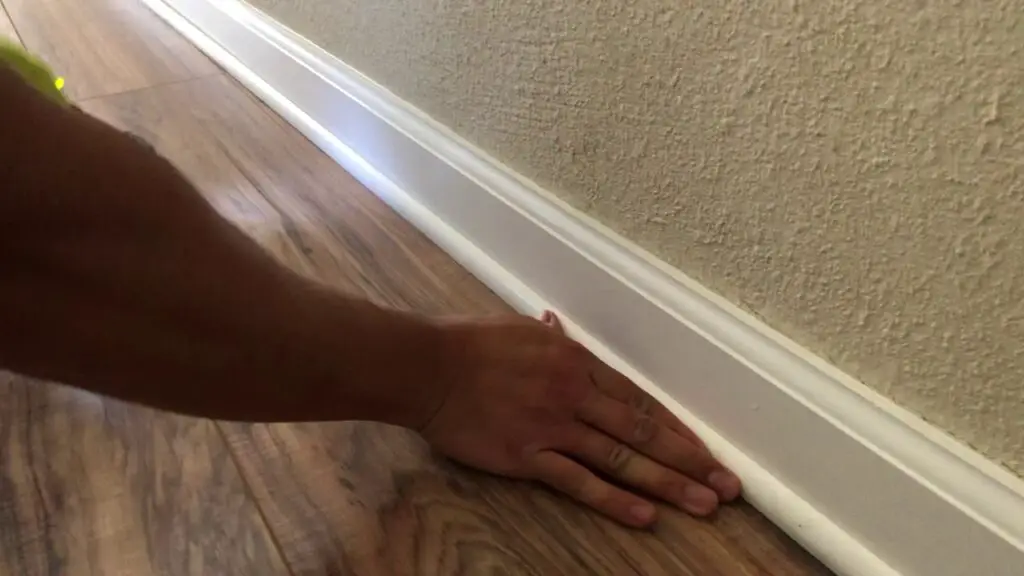
Conclusion
Baseboards are an essential component of any interior design, providing a finishing touch to a room while also serving a practical purpose. They are typically installed along the bottom of walls, covering the joint between the wall and the floor. When it comes to the materials used to make baseboards, there are several options available, each with its own unique characteristics and benefits.
One common material used for baseboards is wood. Wood types baseboards are popular for their natural beauty and versatility. They can be made from various types of wood, such as pine, oak, or maple, and can be stained or painted to match any decor. Wood baseboards are durable and can withstand wear and tear, making them a long-lasting choice for any room.
Another material commonly used for baseboards is MDF, which stands for medium-density fiberboard. MDF baseboards are made from wood fibers and resin, resulting in a strong and stable product. They are often less expensive than wood baseboards and can be easily painted to achieve a smooth and seamless finish. MDF baseboards are also resistant to warping and shrinking, making them a popular choice for areas with high humidity.



